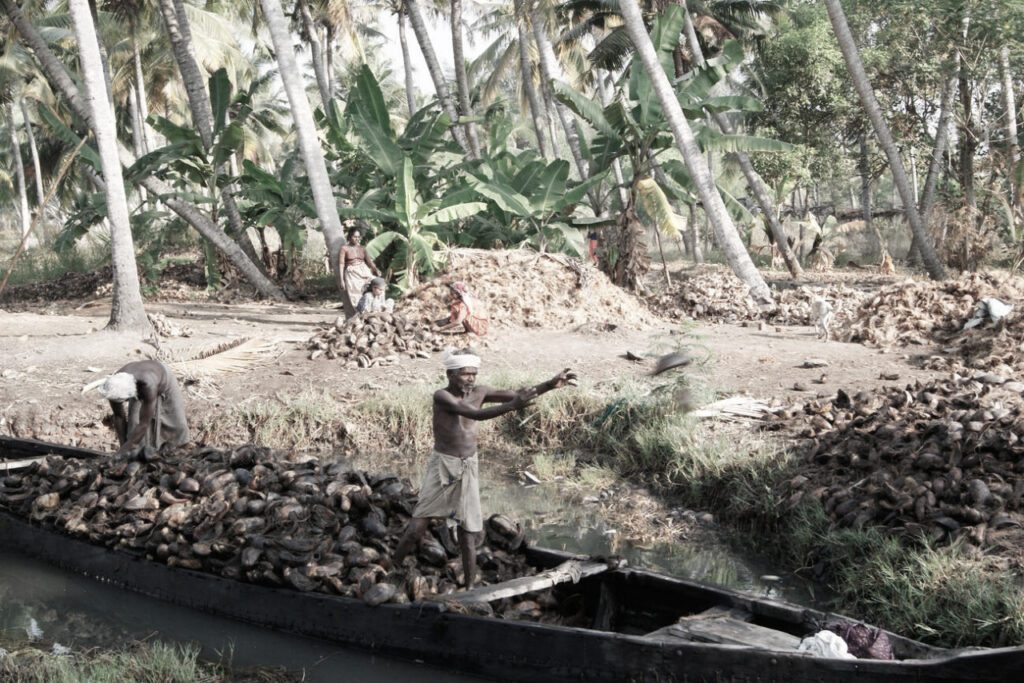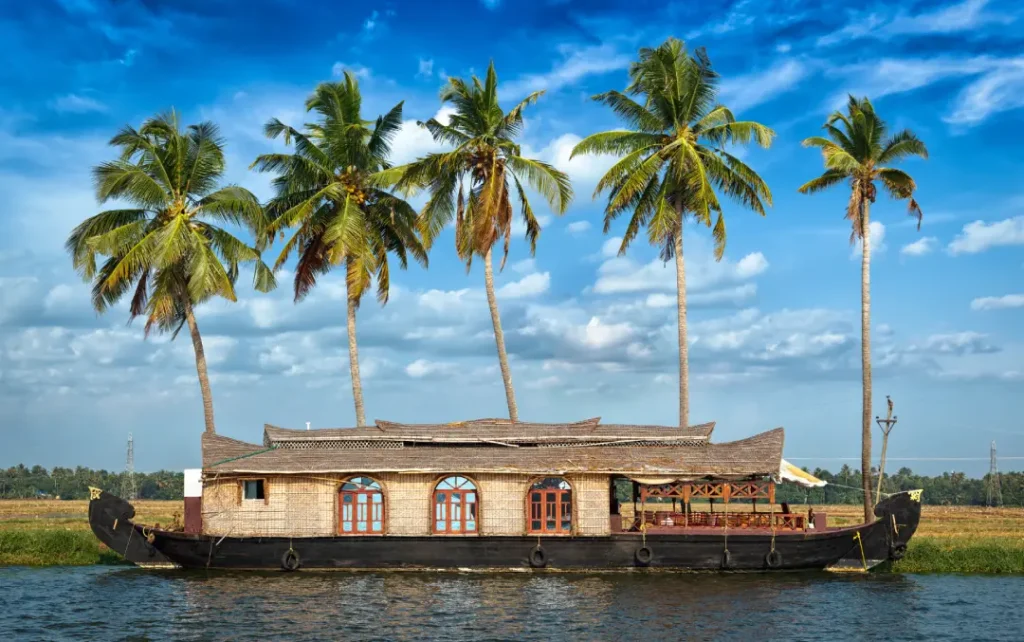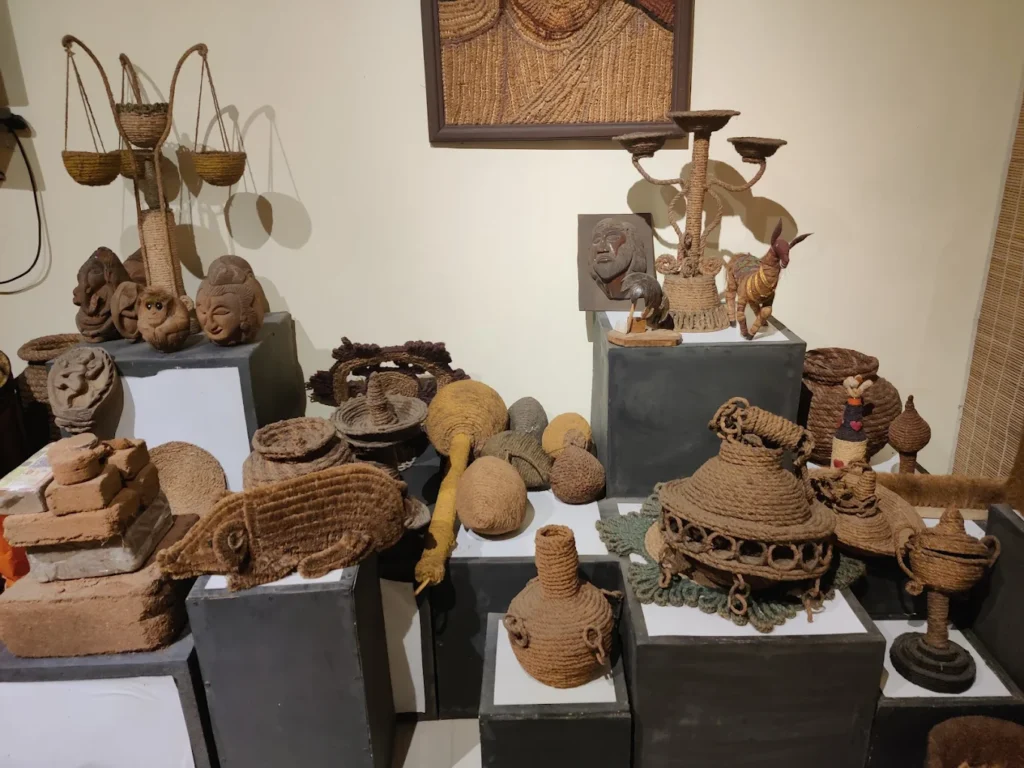The History & Cultural Significance of Coir in India
Imagine a land where heritage and artistry intertwine, creating extraordinary masterpieces that reflect a deep-rooted cultural spirit. Welcome to India, a country where every craft tells a story of sustainability, devotion, and tradition. Among these timeless crafts, coir — the golden fiber extracted from coconut husks — holds a special place in India’s cultural and economic heritage.
For centuries, this humble natural fiber has been woven into daily life, adorning homes, supporting livelihoods, and representing an enduring bond between nature and craftsmanship. The history and cultural significance of coir in India extends far beyond its practical use; it embodies the values of eco-friendly living, resourcefulness, and artistic ingenuity that define Indian tradition.
From the ancient coasts of Kerala to modern global markets, coir’s journey is one of evolution and resilience. In this article, we explore the fascinating history of coir, its deep cultural roots, and the craftsmanship that continues to thrive in Kerala’s coir capital — Alleppey. Together, let us unravel the timeless legacy of coir, a fiber that not only sustains communities but also symbolizes the harmonious coexistence of tradition and sustainability.
Ancient Roots of Coir in India
Long before the modern world discovered the charm of natural fibers, ancient India had already embraced coir as a versatile and sustainable material. Historical references trace its use back thousands of years, deeply woven into India’s coastal life and trade traditions. The coir cultural significance has its earliest roots in these ancient civilizations, where this resilient fiber became both a household essential and a symbol of ingenuity.
Early Mentions in Vedic Texts
The story of coir begins in India’s sacred scriptures. Mentions of coconut and its fibrous husk appear in Vedic texts, describing its importance in daily life and rituals. Ancient communities learned to extract, spin, and weave coir fibers, transforming them into ropes, mats, and baskets — all crafted with precision and purpose. This early craftsmanship reveals not only technical skill but also a profound understanding of natural materials.
Coir’s strength and durability made it indispensable for everyday use. In villages and coastal regions, it served as the foundation for domestic life — from simple sleeping mats to fishing nets that sustained entire communities. These early applications set the stage for the enduring coir cultural significance that continues even today.
Maritime Heritage and Early Trade
The coastal belt of southern India, particularly Kerala and Tamil Nadu, played a vital role in shaping the history of coir. The region’s proximity to the sea made coir an essential resource for maritime life. Sailors and traders used coir ropes to build sturdy ships and secure cargo during long voyages across the Indian Ocean.
Historical accounts suggest that Indian coir ropes were exported as early as the Arab and Roman trading periods, admired for their durability and resistance to saltwater. These ropes connected India’s shores with distant lands, symbolizing not just commerce but cultural exchange. In essence, coir became both a literal and metaphorical thread linking India to the rest of the world.
Today, when we admire the coir craftsmanship of Kerala’s artisans, we are looking at a living legacy — a tradition that has evolved yet remains rooted in its ancient wisdom
Learn more about our Coir Door Mats Collection to see traditional craftsmanship in modern form
Coir and Indian Cultural Identity
Beyond its practical uses, coir carries deep cultural resonance in India. Its presence in daily life, religious practices, and festive celebrations highlights the enduring coir cultural significance — a testament to India’s tradition of harmonizing craftsmanship with nature. Coir is more than a material; it is a symbol of sustainability, artistry, and community values passed down through generations.

Symbol of Sustainability and Eco-Friendly Living
The Indian ethos of living in harmony with nature finds a perfect expression in coir. Derived from coconut husks, coir is a renewable and biodegradable resource, reflecting centuries of eco-conscious practices. Communities across India historically utilized every part of the coconut, minimizing waste and maximizing utility.
The coir cultural significance lies in its embodiment of sustainable living. Its use in household items like mats, ropes, and baskets demonstrates the ingenuity of traditional Indian lifestyles — a perfect example of how culture and environmental responsibility intersect. Even today, coir continues to inspire modern eco-friendly solutions in interior décor, landscaping, and erosion control.
Role in Festivals and Traditions
Coir also plays a significant role in Indian festivals and rituals, particularly in Kerala, where tradition meets artistry. One of the most notable examples is Onam, the annual harvest festival. During Onam, homes are adorned with decorative mats and floral patterns called pookkalam. Historically, artisans in Alleppey often used dyed coir fibers to craft intricate designs, especially in households where fresh flowers were scarce.
These vibrant creations not only serve as decorative elements but also connect communities to their cultural roots, preserving skills, stories, and local identity. From temple decorations to festive floor coverings, coir’s artistic applications highlight its cultural and symbolic significance across generations.
Kerala – The Heart of Coir Craftsmanship
Kerala, often called the “Land of Coconuts,” is the epicenter of India’s coir heritage. For centuries, this lush coastal state has nurtured a thriving coir industry that combines traditional artistry with functional design. The coir cultural significance in Kerala is not only evident in its products but also in the communities and artisans who have kept this craft alive through generations.
Alleppey – The Cradle of Coir

Among Kerala’s many coir-producing regions, Alleppey stands out as a global hub. The backwaters and coconut groves of this historic town have produced some of the finest coir fibers in the world. Alleppey coir holds a Geographical Indication (GI) status, ensuring its authenticity and preserving its reputation for superior quality.
From humble village workshops to modern coir factories, the region has cultivated a unique blend of craftsmanship and innovation. This combination allows Alleppey artisans to create a wide array of products, from mats and carpets to baskets and decorative handicrafts, all maintaining the tradition of durability, sustainability, and beauty.
The Skill of Kerala’s Artisans
Kerala’s coir artisans employ techniques passed down through generations. The process begins with retting, where coconut husks are soaked to soften fibers, followed by defibering, spinning, and weaving. Each step demands precision, patience, and intimate knowledge of the material.
Women and men working in cooperatives have preserved these time-honored practices, ensuring that coir products retain their traditional character while also meeting contemporary demands. The attention to detail and dedication of these artisans exemplify why the coir cultural significance extends beyond functionality — it is an art form in itself.
The International Coir Museum – Preserving Heritage
To celebrate and preserve this rich heritage, the International Coir Museum in Kalavoor, Alleppey, showcases the evolution of coir production, traditional tools, and exquisite coir handicrafts. It serves as a bridge between past and present, educating visitors about coir’s historical roots, technical processes, and cultural importance. The museum highlights how Kerala continues to honor and innovate upon a craft that has shaped local identity for centuries.

The Evolution of Coir into a Modern Industry
While coir has ancient roots, its journey from a traditional craft to a globally recognized industry showcases India’s ingenuity and adaptability. The coir cultural significance extends beyond heritage — it also embodies economic growth, technological innovation, and sustainable enterprise.
From Village Workshops to Organized Industry
Historically, coir production in Kerala began in small village workshops, where families manually processed coconut husks into ropes, mats, and baskets. With growing domestic and international demand, the coir sector gradually organized into structured cooperatives and factories.
The establishment of the Coir Board of India in 1953 played a pivotal role in modernizing the industry. It introduced scientific methods for fiber extraction, spinning, and product diversification while providing technical training to artisans. This ensured that coir remained competitive in global markets without compromising traditional craftsmanship
Export Growth and Global Recognition
Kerala’s coir products quickly gained popularity abroad due to their durability, eco-friendliness, and aesthetic appeal. During the 20th century, coir mats, carpets, and ropes became staple exports to Europe, the Middle East, and North America.
Today, India is the largest exporter of coir products in the world. Alleppey’s coir mats, carpets, and innovative handicrafts continue to symbolize the coir cultural significance by merging traditional artistry with international market demands
Innovation and Modern Applications
Modern coir production has expanded into environmentally conscious applications. Beyond traditional mats and ropes, coir is now used in:
- Coir Geotextiles, Coir Logs etc. for soil erosion control
- Coir pith for horticulture and agriculture
- Biodegradable composites for furniture and interior décor
These innovations highlight coir’s versatility and reinforce its cultural and ecological significance, bridging the gap between heritage and modern sustainable living.
Modern Marvels – Coir Products from Kerala and Alleppey
Kerala’s artisans have transformed the humble coconut fiber into a wide range of exquisite products that blend tradition, functionality, and artistic flair. The coir cultural significance is vividly reflected in the variety, design, and durability of these modern marvels. From everyday household items to decorative handicrafts, Alleppey’s coir continues to captivate both domestic and international markets.
Coir Mats and Carpets
The most iconic coir products are mats and carpets. Handcrafted with precision, these items combine natural textures with vibrant designs. Known for their resistance to water and dirt, coir mats are ideal for homes, hotels, and commercial spaces. They not only serve a practical purpose but also symbolize Kerala’s artisanal heritage.
Mats range from simple, rustic styles to intricately patterned designs, each echoing the creativity and skill of the coir artisans. Carpets, larger in scale, often feature traditional motifs that celebrate Kerala’s cultural richness while maintaining modern functionality.
Coir Handicrafts and Decorative Artifacts
Beyond mats and carpets, Kerala’s coir artisans excel in creating unique handicrafts and decorative items:
- Baskets and storage solutions – practical yet aesthetic, perfect for modern homes
- Lampshades and wall hangings – blend natural fibers with artistic patterns
- Sculptures and figurines – showcase intricate weaving and traditional motifs
Each creation embodies the coir cultural significance, turning a natural fiber into objects of beauty and cultural storytelling. These handicrafts are sought after by collectors and interior designers worldwide, reflecting the global appreciation for Kerala’s coir heritage.
Sustainable Applications
Modern innovation has expanded coir’s use into eco-friendly solutions:
- Coir geotextiles for erosion control and landscaping
- Coir pith in agriculture and horticulture
- Eco-friendly composites for furniture and sustainable home décor
These applications highlight how the coir cultural significance transcends traditional craft, positioning Kerala as a leader in sustainable design and environmental stewardship.
The Global Relevance of Coir Today
The journey of coir from Kerala’s backwaters to homes across the world highlights its timeless appeal and enduring value. The coir cultural significance in India is no longer confined to local traditions; it now represents a sustainable, eco-friendly alternative in global markets.
Growing International Demand
Coir products are increasingly sought after in Europe, North America, and Asia for their durability, natural aesthetic, and environmental benefits. Coir mats, carpets, and handicrafts have become staples for households, hotels, and resorts that value eco-conscious décor.
Exporters in Kerala and Alleppey continue to innovate, offering custom designs and premium finishes that cater to international tastes. By combining traditional techniques with modern production standards, India’s coir industry has successfully positioned itself as a symbol of heritage and sustainable living worldwide.
Coir as a Sustainable Solution
Global awareness of environmental issues has enhanced coir’s reputation as a renewable and biodegradable material. Beyond aesthetics, coir is used in sustainable construction, erosion control, and agriculture. Coir geotextiles prevent soil erosion, while coir pith serves as an eco-friendly growing medium.
The international adoption of these applications reflects how the coir cultural significance extends beyond art and tradition, influencing contemporary environmental practices and sustainable development.
Bridging Tradition and Modernity
The global popularity of coir demonstrates the perfect balance between cultural heritage and modern needs. Kerala’s artisans, by preserving centuries-old techniques, continue to honor the coir cultural significance while innovating for contemporary markets. This ensures that coir remains not only a cultural artifact but also a vital contributor to the global green economy.
Conclusion – Preserving the Coir Cultural Significance
From ancient coastal communities to modern global markets, coir has woven itself into the very fabric of India’s heritage. Its journey reflects centuries of ingenuity, craftsmanship, and a profound respect for nature. The coir cultural significance lies not only in its practical utility but also in its ability to connect communities, preserve traditions, and inspire sustainable living.
Kerala, particularly Alleppey, continues to lead this legacy, producing high-quality coir mats, carpets, handicrafts, and eco-friendly products that are admired worldwide. By blending traditional techniques with modern innovation, artisans ensure that coir remains relevant, functional, and culturally meaningful.
As we celebrate this timeless fiber, it is clear that coir is more than just a material — it is a symbol of India’s dedication to sustainability, artistry, and cultural preservation.
